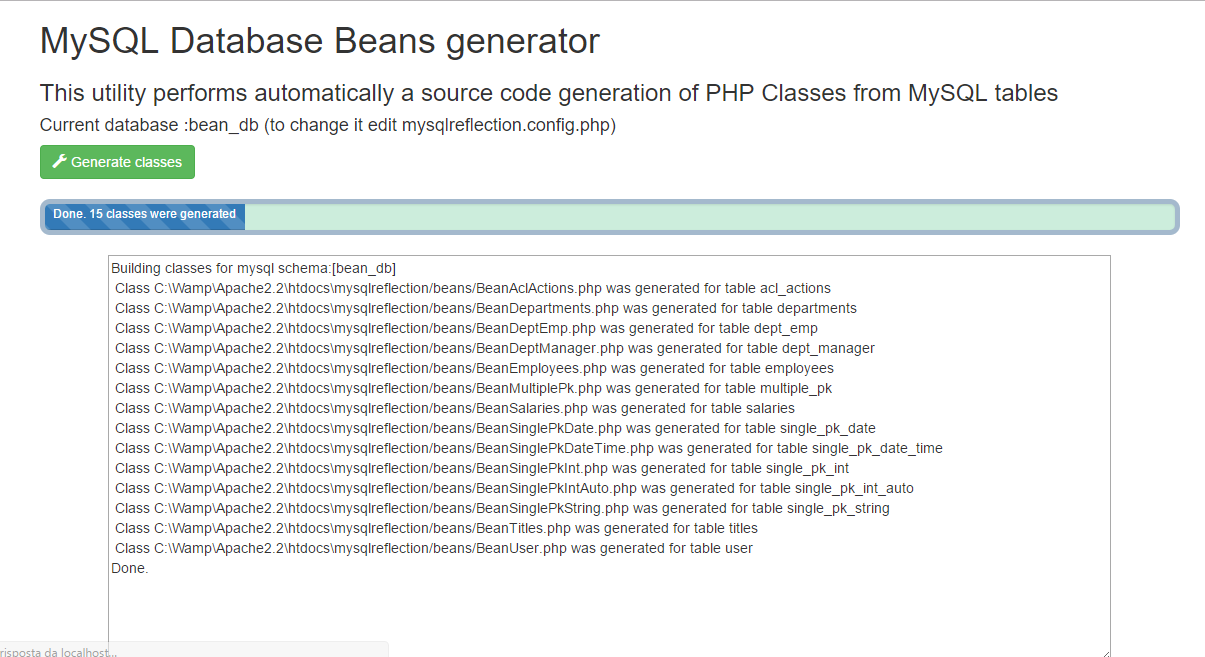- Notifications
You must be signed in to change notification settings - Fork 16
MySQL ORM
Object-relational mapping (ORM) is a mechanism that makes it possible to address, access and manipulate objects without having to consider how those objects relate to their database tables.
WebMVC provides you with a useful tool for the Object Relation Mapping of MySQL. This tool generates automatically Model classes for any tables of a given database schema.
To generate Model classes to map database tables you need to:
-
Use lowercase with the underscore, which is the widely used MySQL naming notation (formerly named as snake case notation), on your database tables and field names.
-
Configure your database schema by modifying
util\mysqlreflection\mysqlreflection.config.phpfile and, assigning appropriate values to DBHOST, DBNAME, DBUSER, DBPASSWORD, and DBPORT PHP constants, according to your MySQL settings. -
Then, launch the tool by typing:
http/localhost/util/app_create_beans.phpNote that, the GUI of the utility uses Bootstrap and jQuery from CDN. So you also need an internet connection alive before running it. -
Once the utility is started, click the "Generate classes" button.
The following figure shows you the startup screen of the utility:

After running the generation of classes you can close the utility. You will find all the generated classes under models\beans folder.
Notice that:
-
You can find a class for each table of your MySQL schema.
-
Each auto-generated class name is prefixed with "Bean" followed by the table name in a PascalCase format. E.g, for the table name users_roles you will find a class named BeanUsersRoles.
-
Each auto-generated class extends
framework\Model.php, so you can relate it to a Controller
Each auto-generated Model, widely known as a Database Bean, provides you with the following:
-
A constructor for managing a fetched data row from a table or for adding a new one on it
-
Management for both single or composite Primary Keys
-
Automatic mapping of the different date formats which may occur between the web application and database
-
It defines a set of attributes corresponding to the table fields
-
Setter and Getter methods for each attribute
-
Setter methods automatically sanitize data against SQL injection
-
OOP methods for simplifying the DML operations of SELECT, INSERT, UPDATE, and DELETE.
-
A facility for quickly updating a previously fetched row
-
Useful methods to obtain table DDL and the last executed SQL statement
-
Error handling of SQL statements
-
It uses camelCase and PascalCase naming convention on class, attributes, and methods that were generated to map table and fields
-
PHPDOC on table, fields, class, attributes, and usage of methods
Notice that ORM doesn't relieve you from a good DB design. This means you must design a good relational database schema, before using the ORM engine provided by WebMVC.
You can use autogenerated database bean classes as a Model or in conjunction with it when coding your MVC applications. On the next page, we explain a a fully functioning DB application and consuming, Model, View ad an autogenerate database bean class.